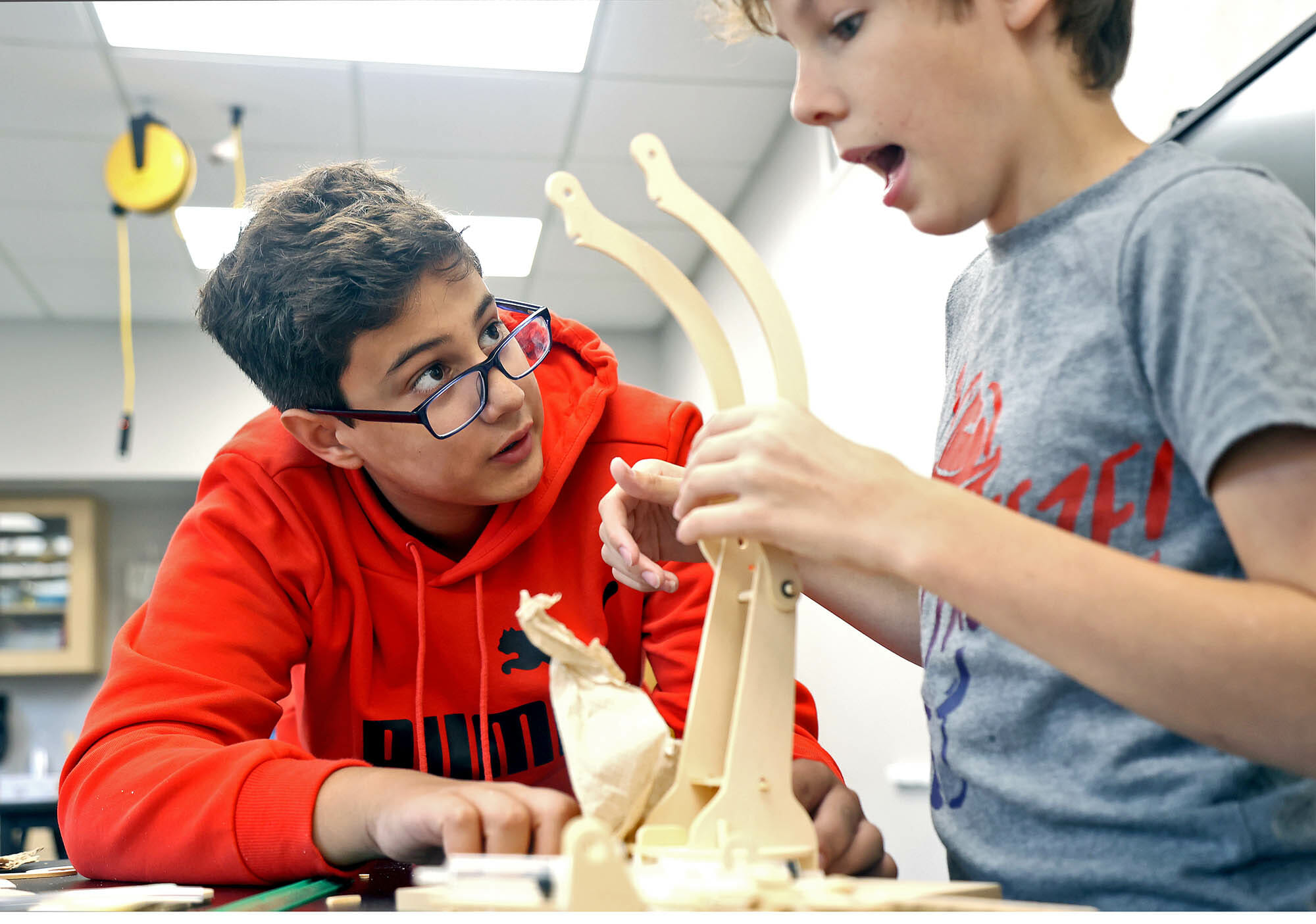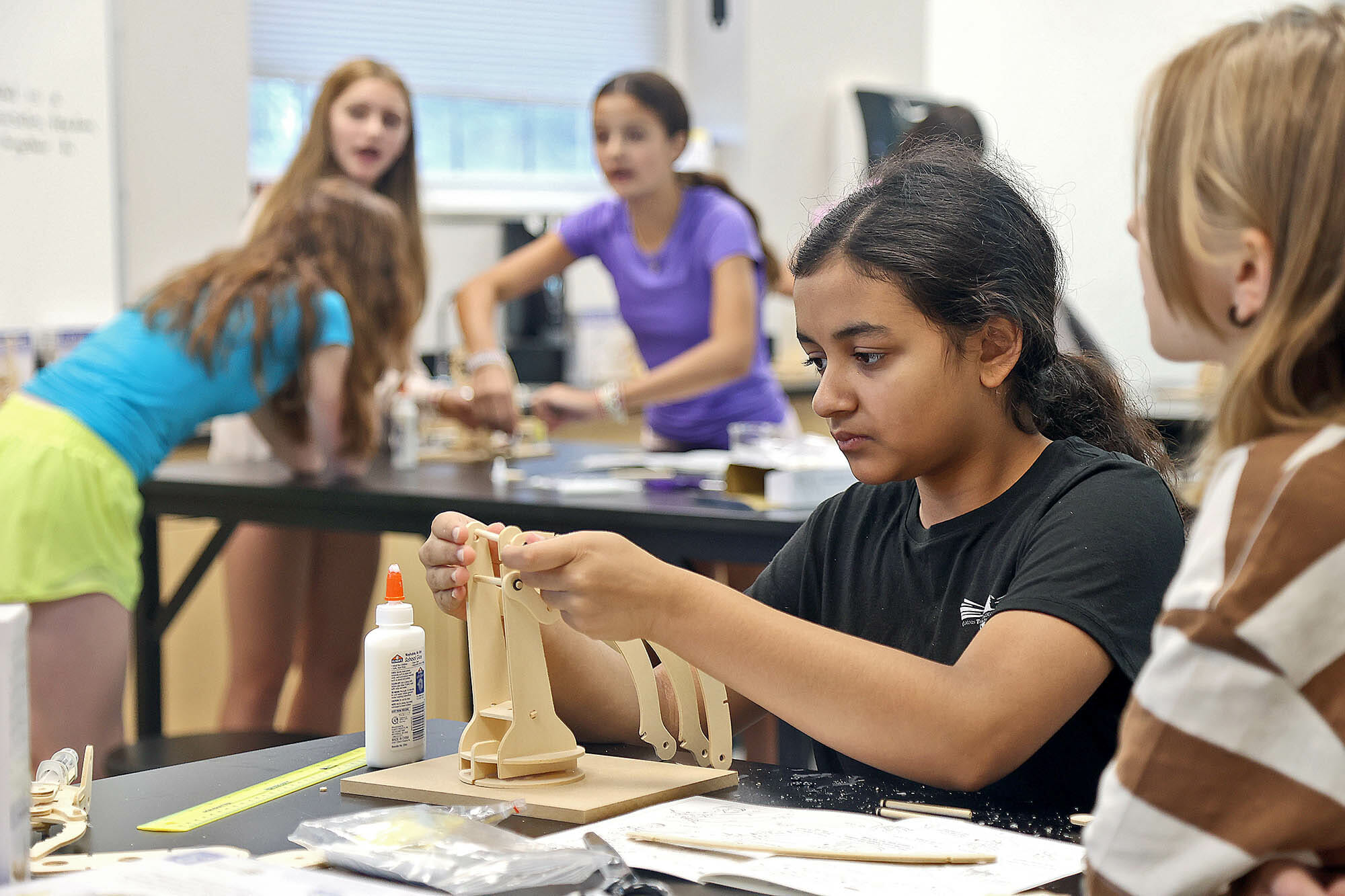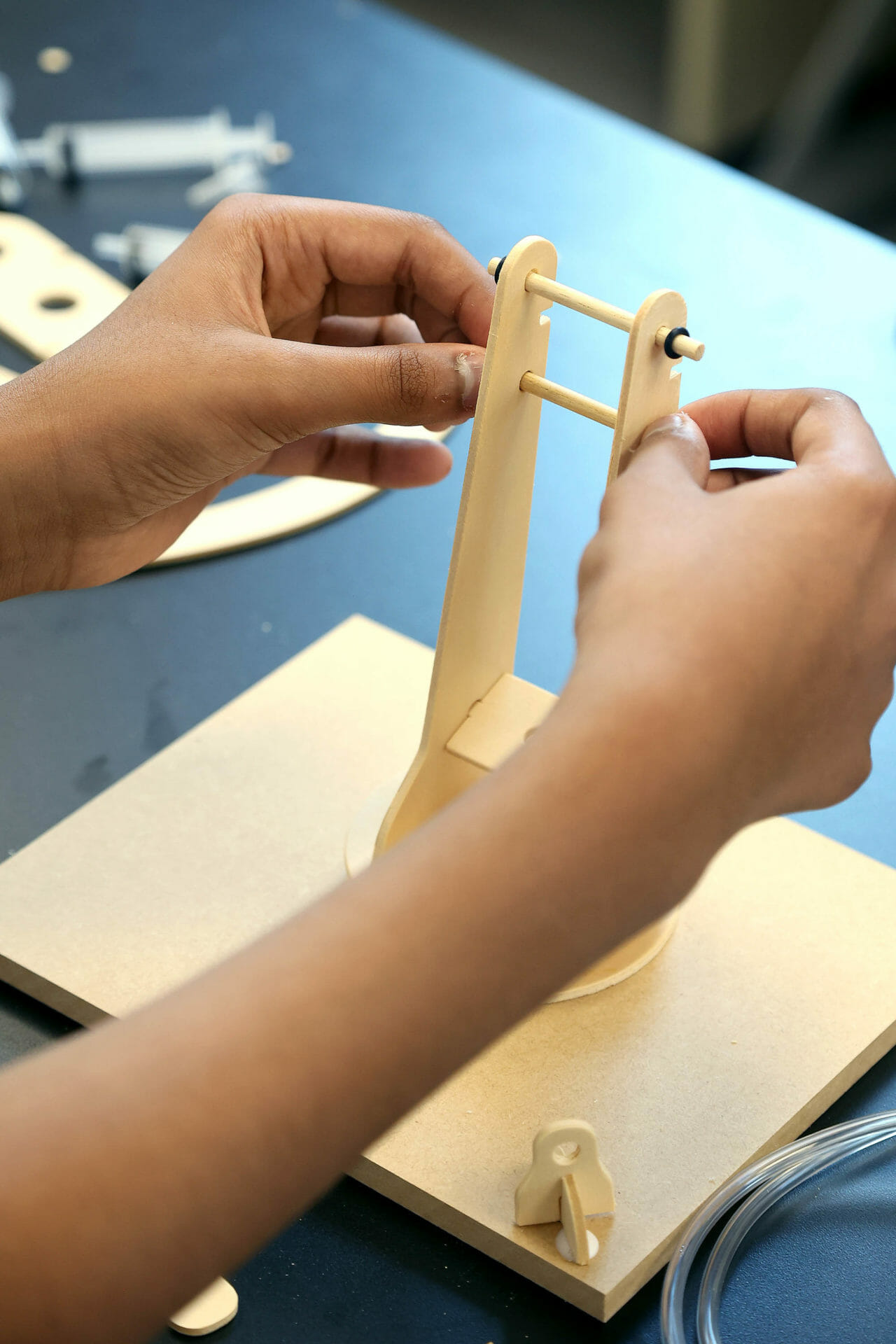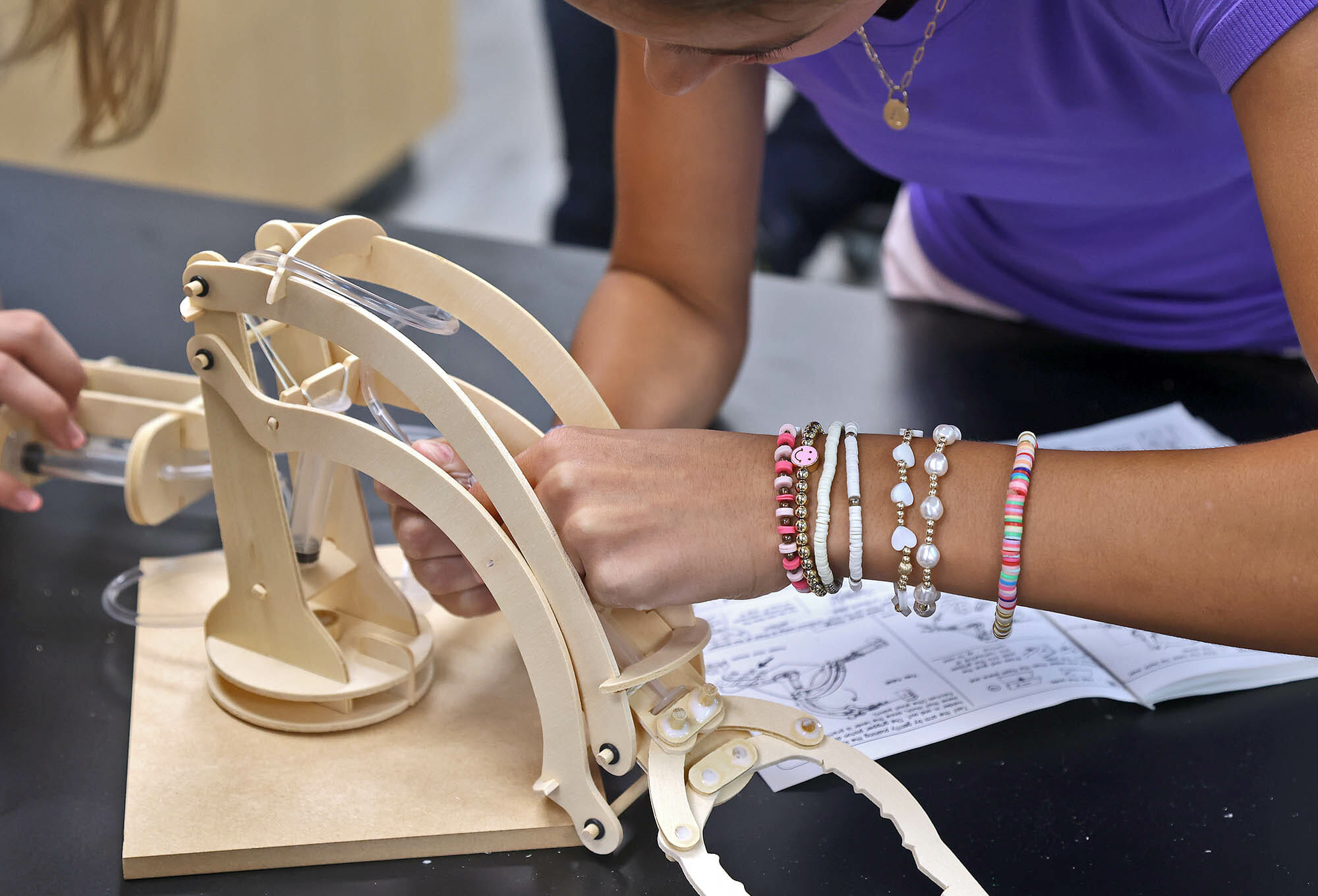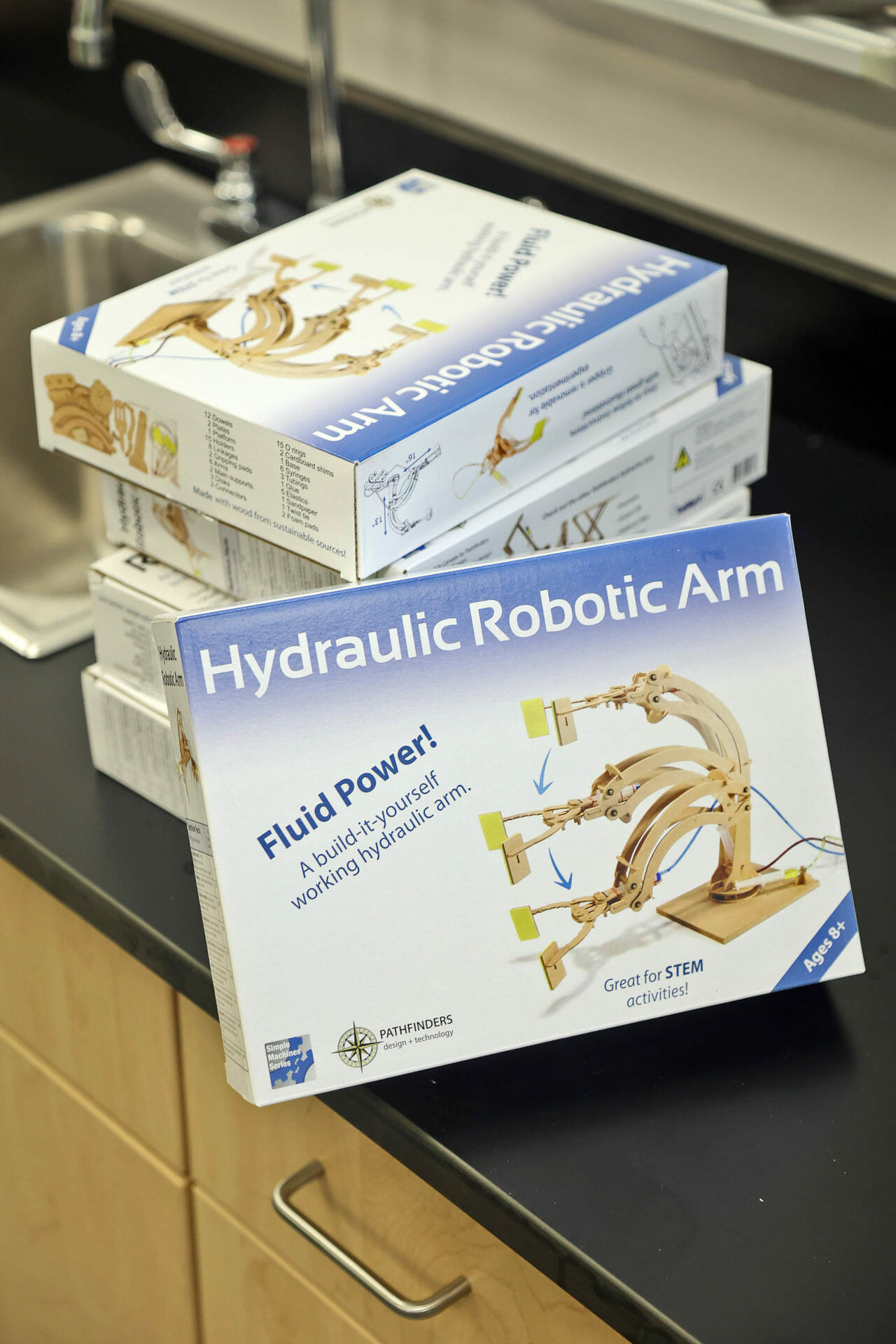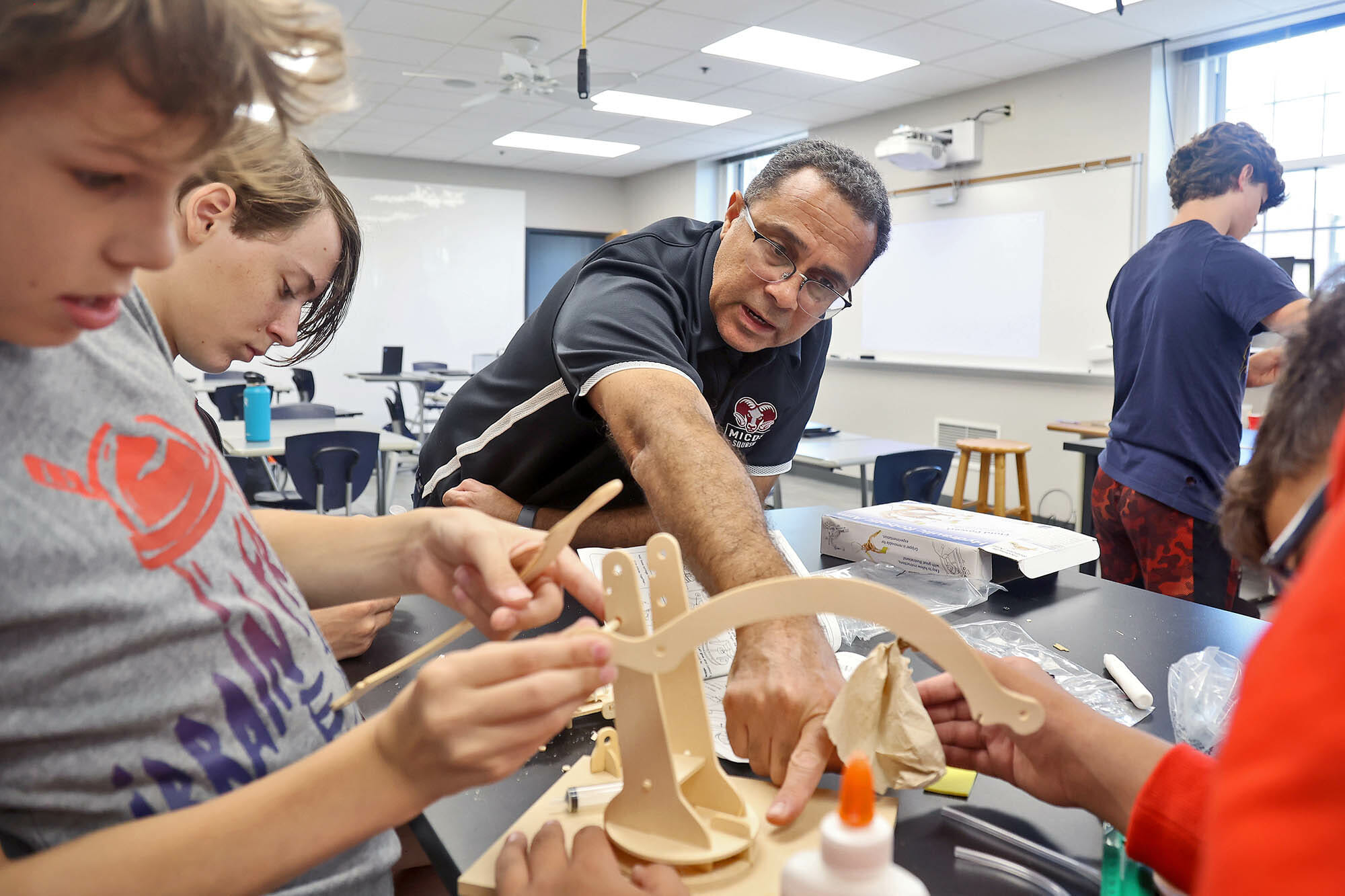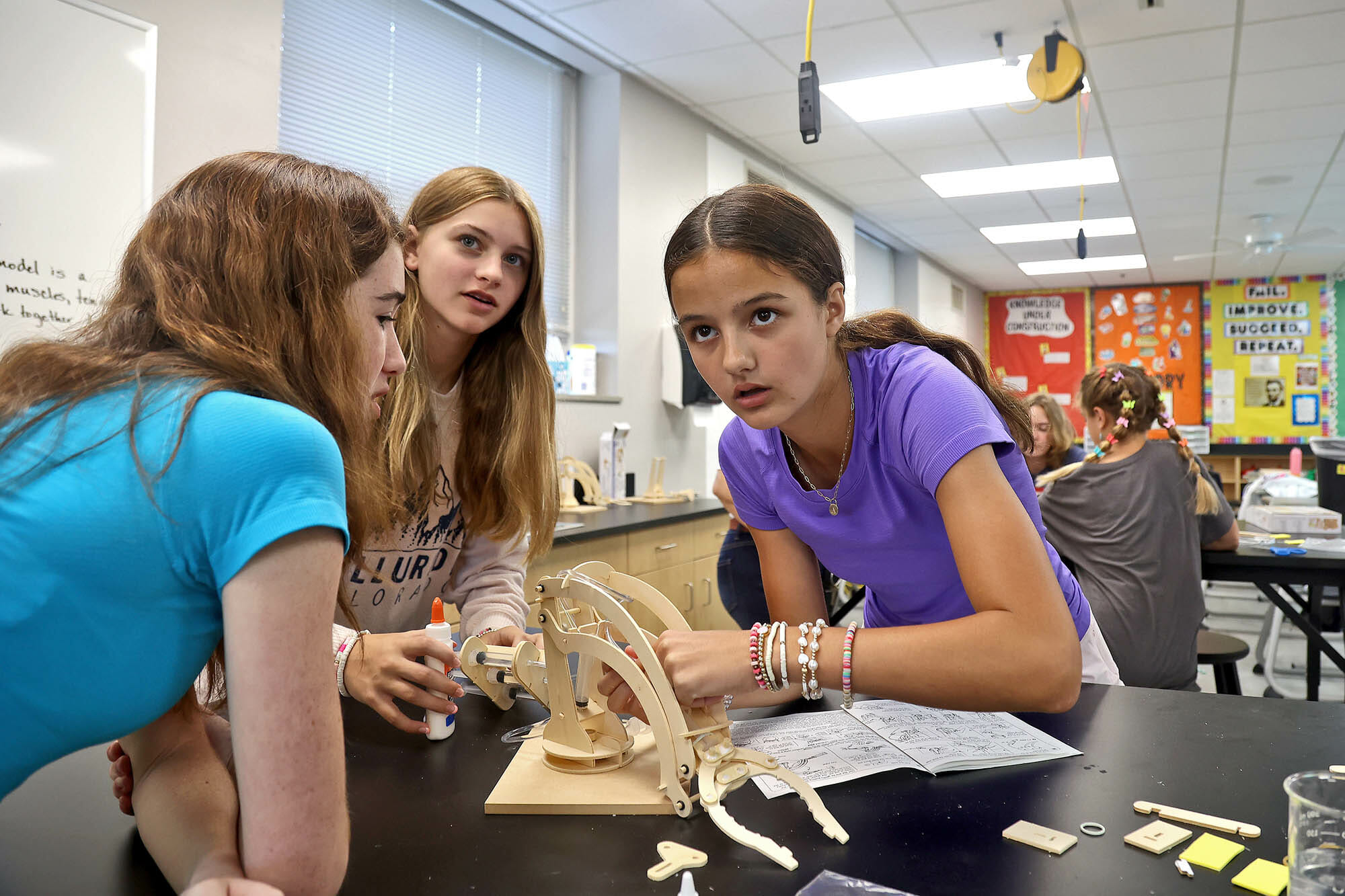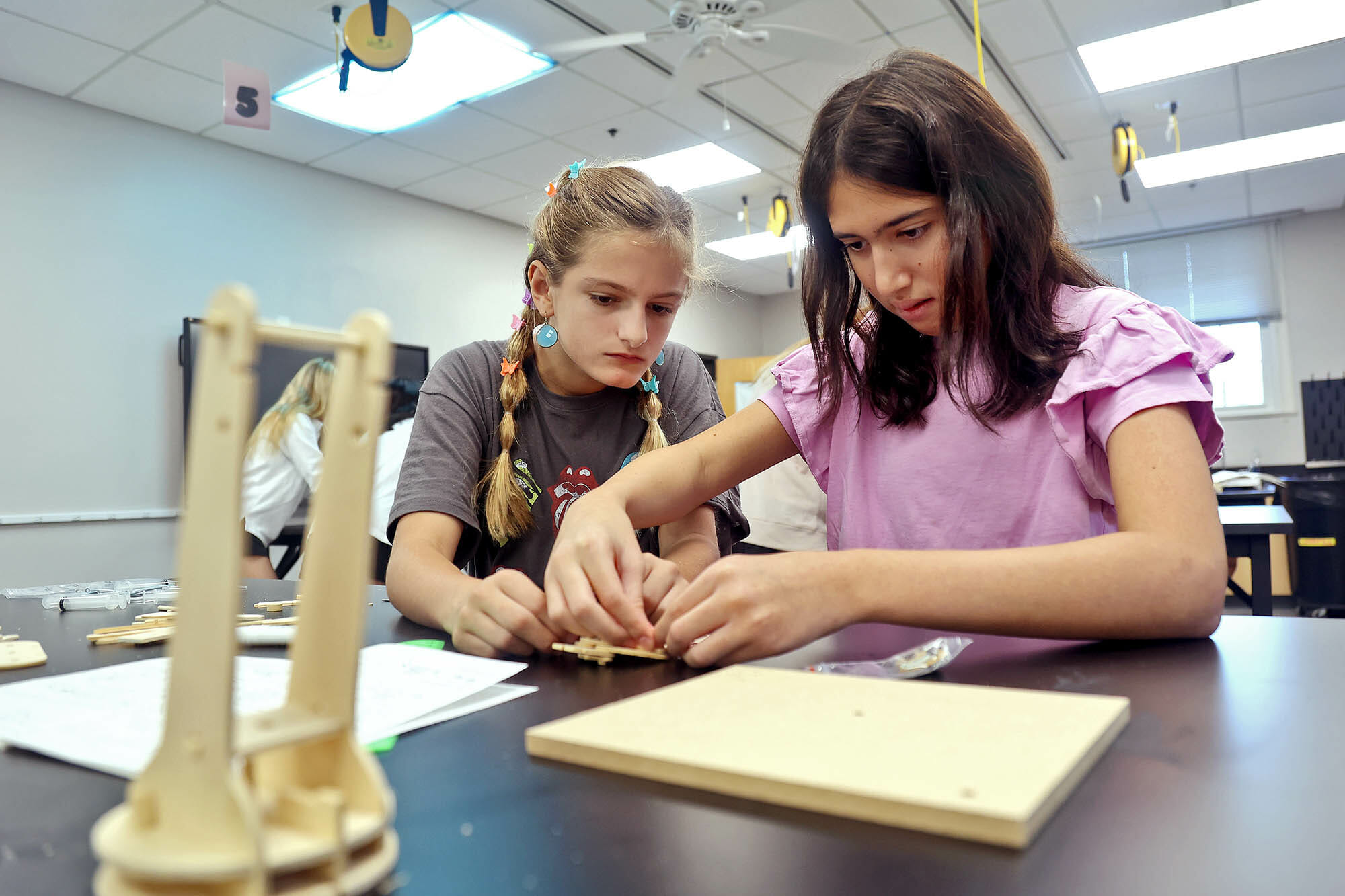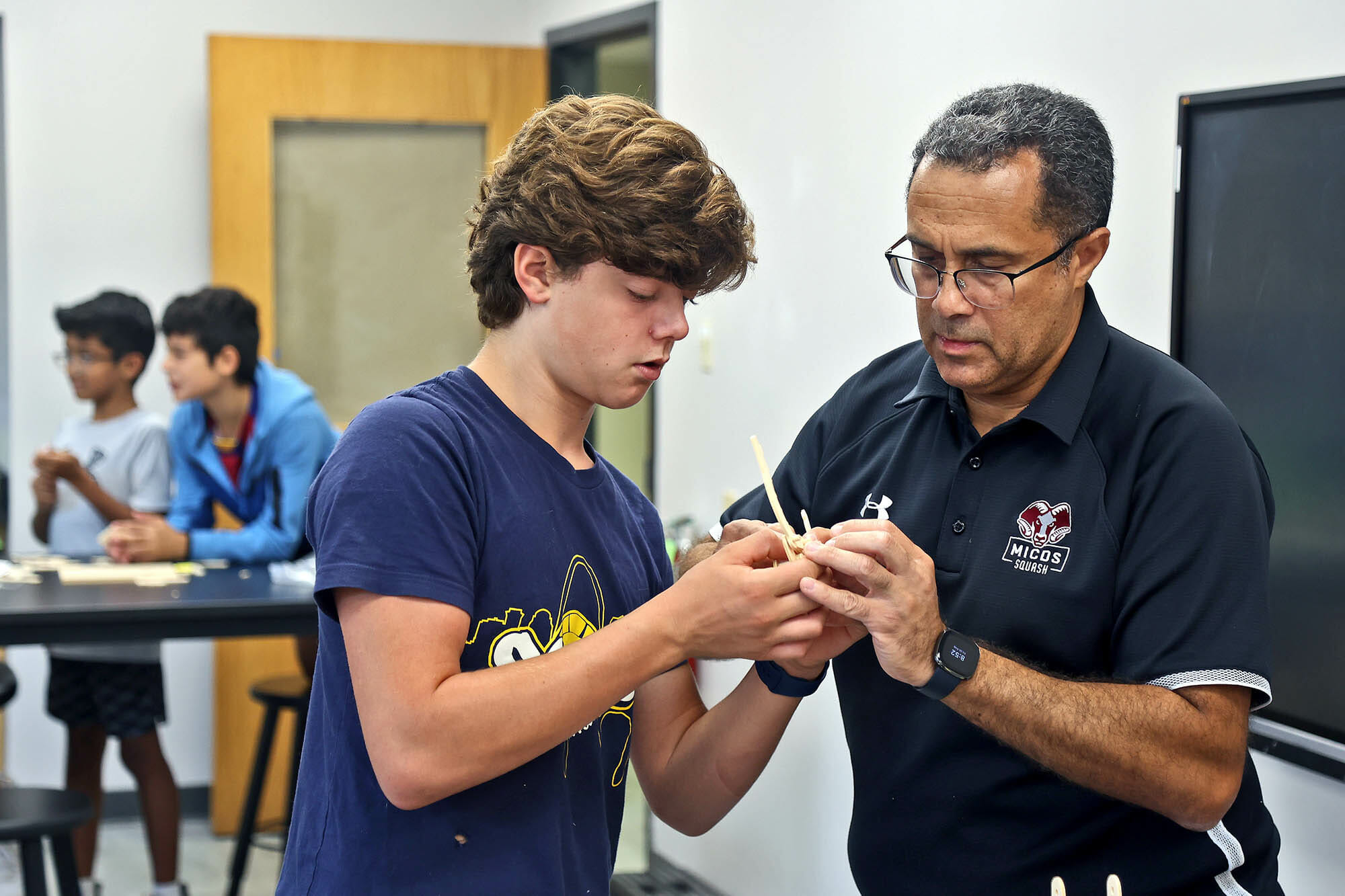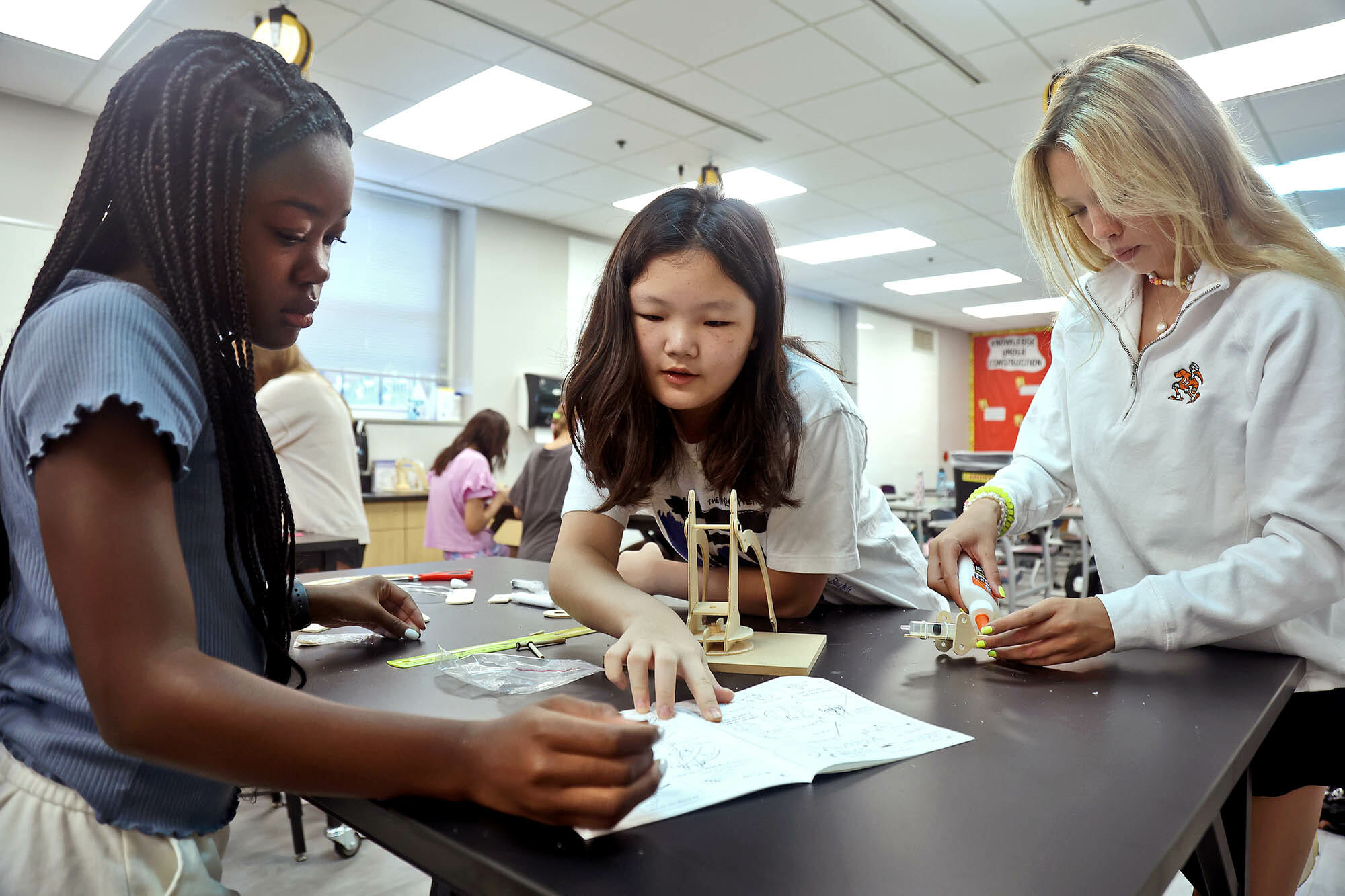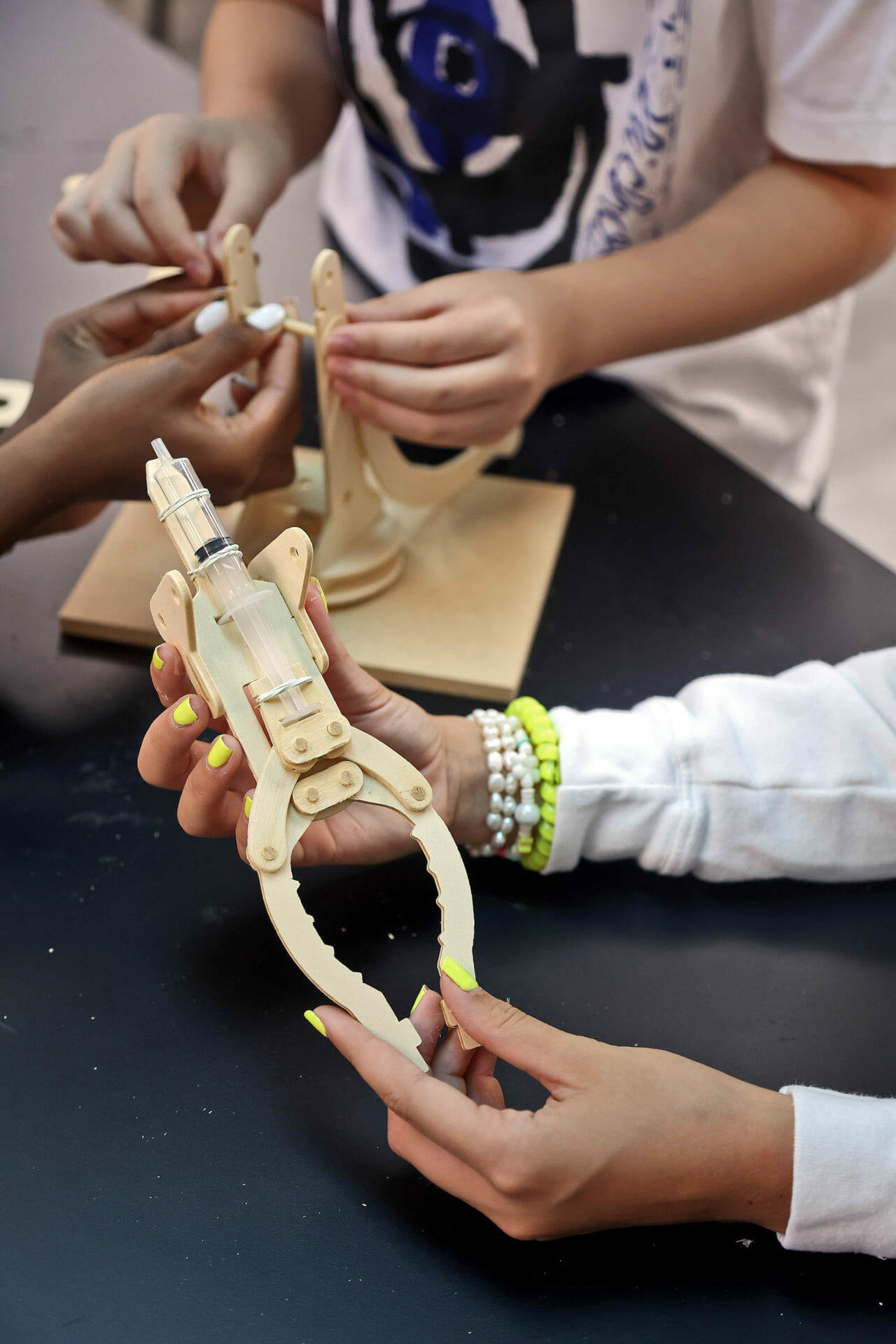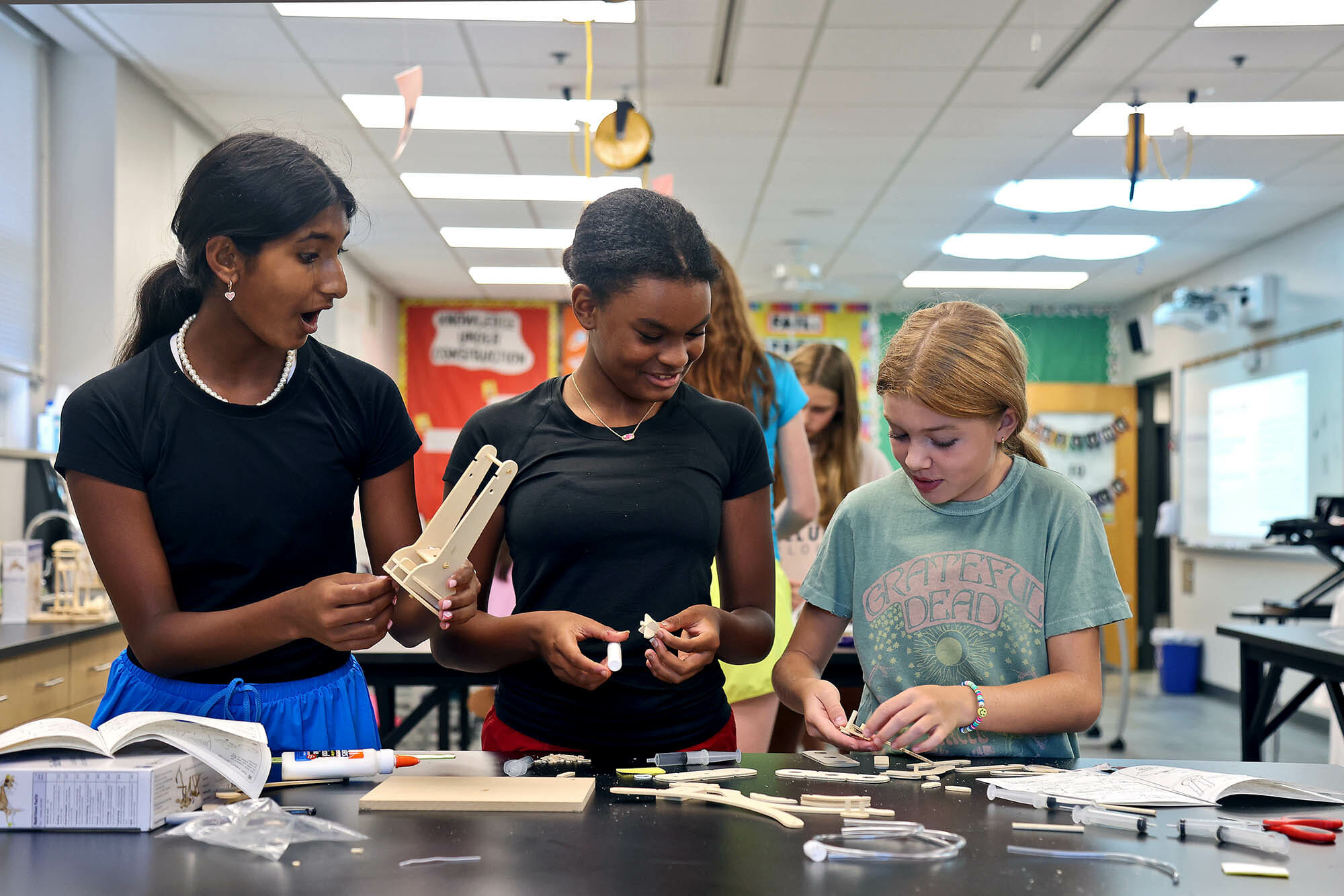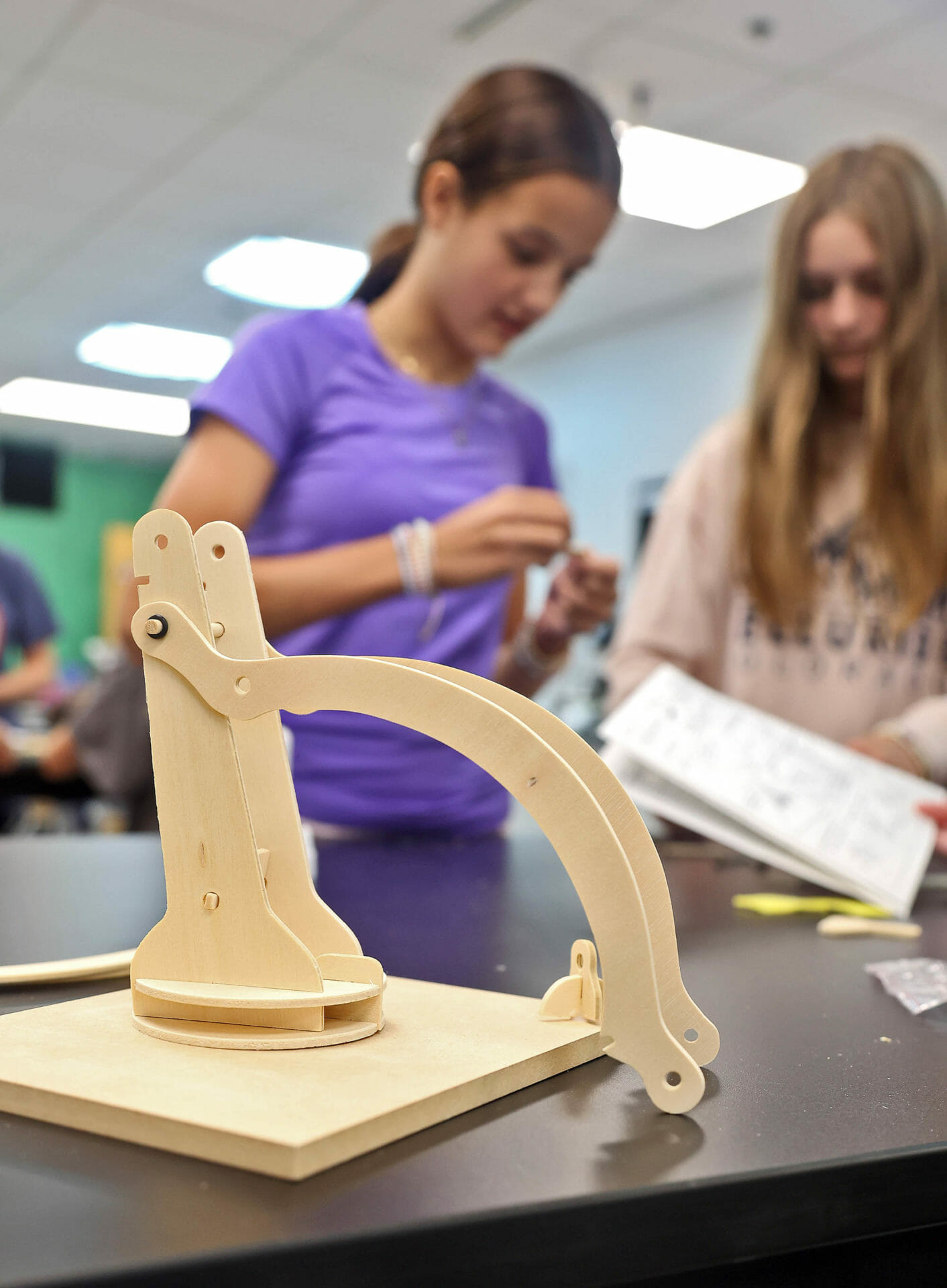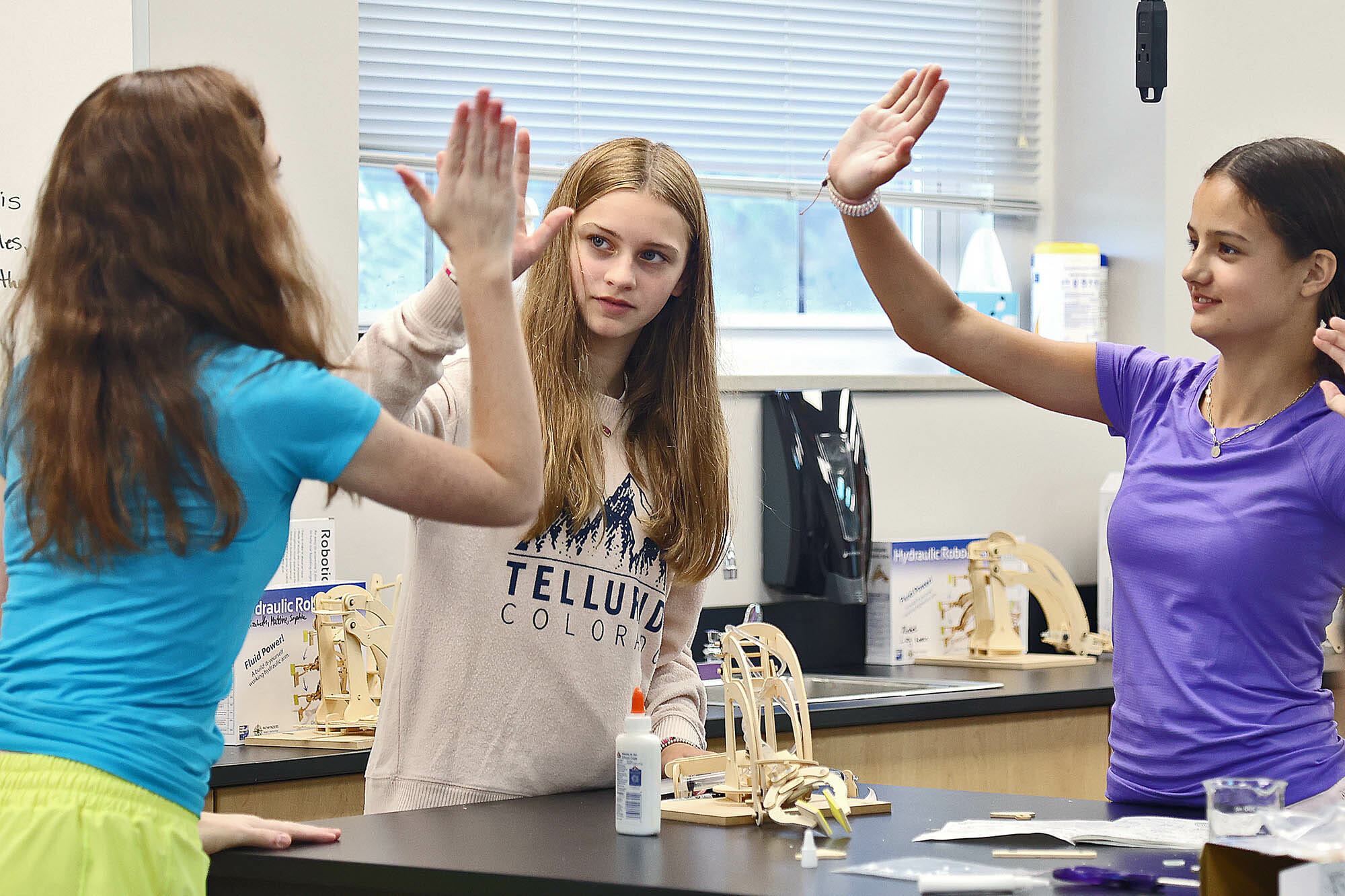How does the human arm work? How do the muscles, tendons, and skeleton combine to facilitate movement and strength? Middle School students answered those questions while working in class with Middle School Science Teachers Michelle Bouchard and Nolan Clarke.
Students began studying body systems with the dissection of chicken legs, examining the tendons, bones, and muscles to get an idea of how they function together. That hands-on experience has fundamental value according to Mr. Clarke, “The actual, tangible handling conveys an understanding of the material that can’t be gained another way.”
Students then transitioned into building a hydraulic arm, paralleling their understanding of biology with their new creations. “Students had to tell us which part of the hydraulic arm related to the human arm,” stated Mrs. Bouchard. Students identified the parts of the arm that mimicked the rotation, bending, and grasping performed by the elbow, shoulder, and hand while studying how those movements are made possible by the skeleton and muscles working in tandem.
Building the hydraulic arms was used to assess how well students understood the biology and functions of each body system. The project gave students a great way of demonstrating their understanding with the added benefit of experimenting, failing, and using critical thinking to solve a set of problems.
Way to flex, Rams!
